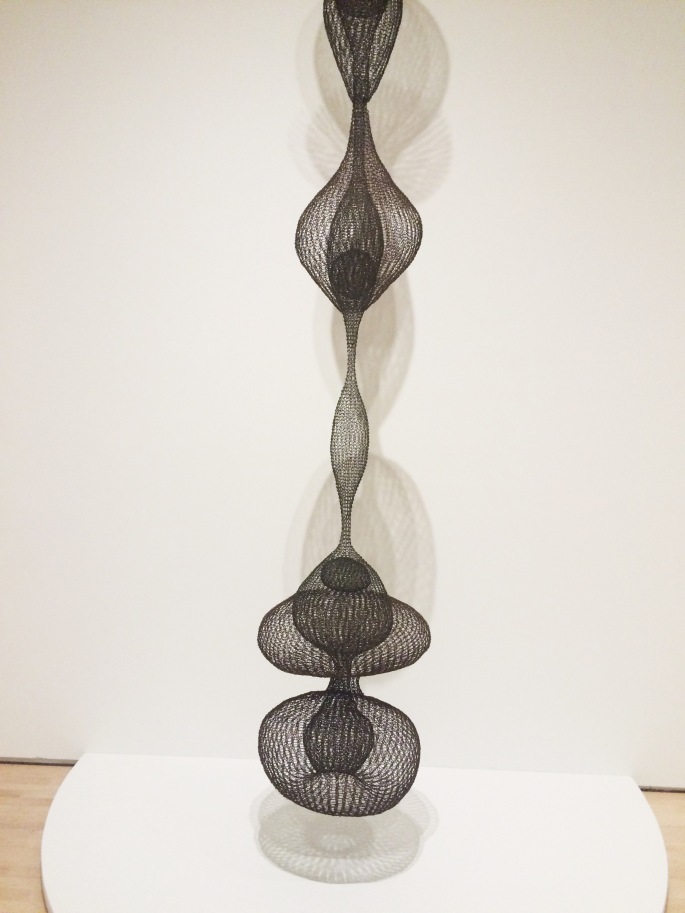We recently visited the San Francisco Museum of Modern Art. It was packed but after spending a few hours there, it’s not hard to see why it’s so popular. With 7 floors of paintings, photography, sculptures, installations, and films, there’s something to suit everybody’s artistic taste.


One of the first collections was the Open Ended Exhibition, which consisted of paintings and sculptures from 1900 onward. It was interesting to see art from almost a century ago and see how art has evolved in terms of subject, style, and technique. It was also overwhelming being in the presence of works by famed artists, notably Frida Kahlo.

-

Frida Kahlo, Frieda and Diego Rivera, 1931
A common obstacle when viewing modern art is difficulty interpreting the meaning behind seemingly complex works. But even when unable to fully understand the artist’s vision, the works can at least be appreciated for their aesthetic value. Perhaps there are some works that do not have a deeper meaning—which sole purpose is its aesthetic beauty.


Aside from works that were simply aesthetically pleasing, there were also particularly thought-provoking works. One piece that stood out to us was a blank white canvas. Although I didn’t get a chance to take note of the title or artist’s name, I recall reading that the work had been inspired by John Cage, an early 20th-century composer who pioneered aleatoric (or chance) music. His famed composition 4’33” consisted of 4 minutes and 33 seconds of rests. This ultimately led the audience to question the essence of music—rather than think of music strictly as symphonic sounds of an orchestra, Cage encouraged listeners to think of music as sounds that naturally occur in everyday life. Similarly, the blank white canvas makes viewers question the essence of art. Can a canvas only be seen as art when it is covered in colorful brushstrokes, or can the ways lights and shadows hit it be considered art as well?
Perhaps the most memorable exhibit was Tomás Saraceno’s installation, Stillness in Motion—Cloud Cities.
These are just a few of the works that stood out to us. We didn’t take too many photos in order to appreciate the art ourselves. Also, photographs don’t do the museum justice—the art is much more amazing in person.
Entry is free for people 18 years or younger. For young adults (19-24), tickets are $19. And for adults, tickets are $25. To see the exhibit of Matisse’s work, there is an additional fee.
These prices are relatively steep, which is unfortunate because it drastically narrows the museum’s audience, preventing people with limited economic means from being able to appreciate the art. Art of any kind should be accessible to all people; money should never restrict people’s ability to experience such aesthetic pleasure.
Nonetheless, if you’re able, we would highly recommend visiting SF MOMA. Expect to spend several hours admiring the vast collection of artwork this institution offers.




This looks like an amazing museum! Wish I’d had the chance to visit when I came to San Francisco, looks like I need to come back 🙂
LikeLiked by 1 person